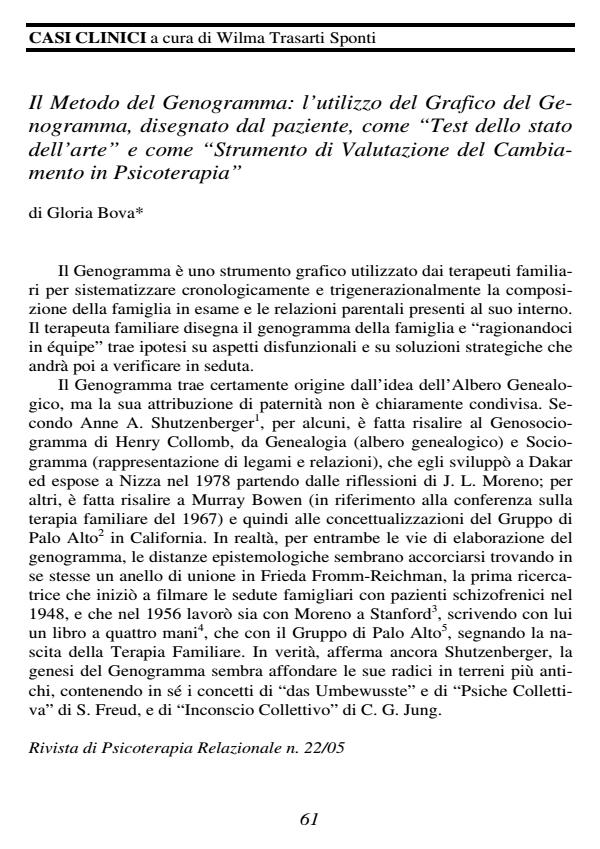Casi clinici. Il metodo del Genogramma: l'utilizzo del Grafico del Genogramma, disegnato dal paziente, come "Test dello stato dell'arte" e come "Strumento di Valutazione del Cambiamento in Psicoterapia"
Titolo Rivista RIVISTA DI PSICOTERAPIA RELAZIONALE
Autori/Curatori Gloria Bova
Anno di pubblicazione 2007 Fascicolo 2005/22 Lingua Italiano
Numero pagine 23 P. 61-83 Dimensione file 405 KB
DOI
Il DOI è il codice a barre della proprietà intellettuale: per saperne di più
clicca qui
Qui sotto puoi vedere in anteprima la prima pagina di questo articolo.
Se questo articolo ti interessa, lo puoi acquistare (e scaricare in formato pdf) seguendo le facili indicazioni per acquistare il download credit. Acquista Download Credits per scaricare questo Articolo in formato PDF

FrancoAngeli è membro della Publishers International Linking Association, Inc (PILA)associazione indipendente e non profit per facilitare (attraverso i servizi tecnologici implementati da CrossRef.org) l’accesso degli studiosi ai contenuti digitali nelle pubblicazioni professionali e scientifiche
The Genogram Method, elaborated and tested by the author and then by its collaborators, permits to look at the genogram as a real therapeutic expedient, an evolutive instrument, a sort of graphical process verifiable on a temporal axis. As the Genogram is drawn by the patient at the beginning and at the end of the therapeutic process, it is at the same time a State of Art Test, that talks about the interior family and spokes at the Therapist about the relational dynamics within it, and a Test to Evaluate Change in Psychotherapy, that enters on the therapy as an instrument of awareness of therapeuthic change realised. The passages of the entire process are: Translation, Comparison, Reading, and Interpretation.;
Gloria Bova, Casi clinici. Il metodo del Genogramma: l'utilizzo del Grafico del Genogramma, disegnato dal paziente, come "Test dello stato dell'arte" e come "Strumento di Valutazione del Cambiamento in Psicoterapia" in "RIVISTA DI PSICOTERAPIA RELAZIONALE " 22/2005, pp 61-83, DOI: